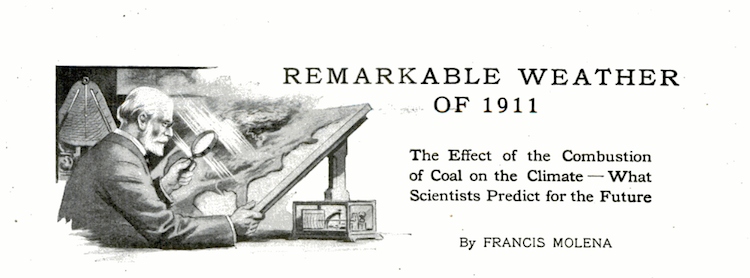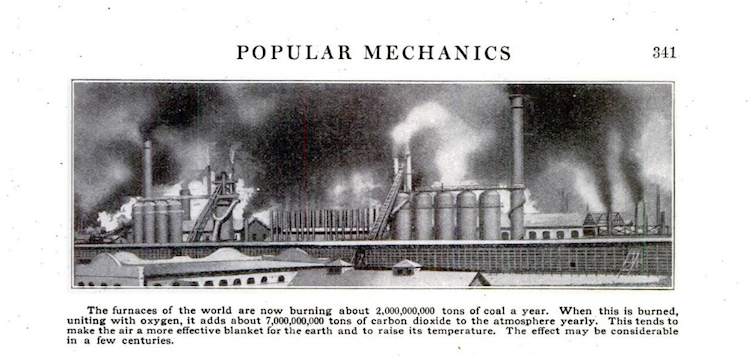If you think the climate change debate is a recent issue, think again. For the past few years, an image of a 1912 article proclaiming that coal consumption can have a negative effect on the climate has circulated online. The image in question is from the August 14, 1912 issue of the New Zealand newspaper, Rodney and Otamatea Times, Waitemata and Kaipara Gazette.
Skeptics will find the original article available in the digital archives of the New Zealand National Library. The article declares that, at the time, the 2 million tons of coal being burned a year add 7 million tons of carbon dioxide to the atmosphere. Even in 1912, the negative impact was clear. “This tends to make the air a more effective blanket for the earth and to raise its temperatures. The effect may be considerable in a few centuries.”
The facts from this news article appear to come from an article in the March 1912 issue of Popular Mechanics. The article, titled The Remarkable Weather of 1911, commented on the strange meteorological swings of the past year and pointed the finger at coal consumption and carbon emissions. The greenhouse effect was already a theory in use, having been developed by Swedish scientist Svante Arrhenius in 1896.

Photo: Google Books
Using basic principles of chemistry, Arrhenius calculated how much carbon was needed to have an impact on the earth’s climate. He concluded that CO2 emissions driven by human activity were certainly enough to shift the planet’s climate, and the work he did became the core of modern climate change science.
Though the article notes that vegetation can help reabsorb carbon dioxide, it warns that coal consumption was already so rapid that it was mitigating the effect that planting trees could have. It’s a stunning realization that, over 100 years later, humans are still struggling to truly understand the impact their behavior is having on the planet and how to modify their habits in order to create a bright future for generations to come.
The article ends with an ominous warning that rings true, even today. “….In light of all that is known it is reasonable to conclude that not only has the brain of man contrived machines by means of which he can travel faster than the wind, navigate the ocean depths, fly above the clouds, and do the work of a hundred, but also that indirectly by these very things, which change the constitution of the atmosphere, have his activities reached beyond the near at hand and the immediate present and modified the cosmic processes themselves.”

Photo: Google Books
h/t: [reddit]
Related Articles:
Before and After Photos Reveal How Much Glaciers Have Melted in 100 Years
Global Warming Map Shows What Happens When the Earth Gets 4 Degrees Warmer
Eye-Opening Photos Capture the Terrifying Beauty of Melting Polar Ice Caps
Amazing Story of Bhutan: A Tiny Country That is Carbon Negative
